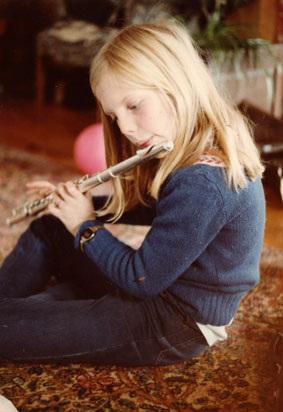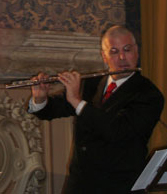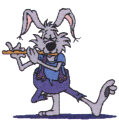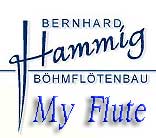Considerazioni critiche sull'Arte di Jean Pierre Rampal di Stefano Conti - Rieti
 Scrivere di Jean Pierre Rampal equivale, per me, a riferire di un musicista che forse piu' di chiunque altro ha contribuito al mio amore per il flauto e per il suo repertorio. Il mio grande rammarico e' quello di aver poco goduto di sue esecuzioni dal vivo; vanto, in ogni caso, una buona conoscenza delle sue incisioni discografiche. Nell'unico concerto che ho potuto ascoltare, la bellezza del suono era tale che nessuna incisione mi sembrasse rendergli merito: non ostante l'eta' avanzata, (69 anni, allora, nel 1991) ed evidenti imperfezioni tecniche, il secondo movimento della Sonata di Poulenc, l'assolo dall' "Orfeo" di Gluck, il fuoco di alcune frasi nella Suite Paysanne Hongroise di Bartok / Arma, il colore del suono nella Sonata BVW 1020 di J. S. Bach (molto probabilmente opera del figlio C. P. Emanuel), facevano vibrare l'intera platea e stabilivano una distanza enorme tra quello che si potrebbe definire un ottimo flautista ed un "fuori classe". Nel 1985, ad un corso di perfezionamento con Maxence Larrieu, per la prima volta ho sentito parlare, a proposito dell'emissione del suono nel flauto, di "resonance", vale a dire di una tecnica che consenta una propagazione del suono in ampiezza, paragonabile, nel pianoforte, alla tecnica delle "cadute". Rampal, in quell'occasione, dal vivo, mi ha dato l'effetto piu' impressionante di cio' che Larrieu chiamava "resonance" e il do basso della trentacinquesima battuta nella Cantilena della Sonata di Poulenc, mi ha letteralmente investito per pienezza e potenza proprio perche' scevro da qualsiasi forzatura.
Scrivere di Jean Pierre Rampal equivale, per me, a riferire di un musicista che forse piu' di chiunque altro ha contribuito al mio amore per il flauto e per il suo repertorio. Il mio grande rammarico e' quello di aver poco goduto di sue esecuzioni dal vivo; vanto, in ogni caso, una buona conoscenza delle sue incisioni discografiche. Nell'unico concerto che ho potuto ascoltare, la bellezza del suono era tale che nessuna incisione mi sembrasse rendergli merito: non ostante l'eta' avanzata, (69 anni, allora, nel 1991) ed evidenti imperfezioni tecniche, il secondo movimento della Sonata di Poulenc, l'assolo dall' "Orfeo" di Gluck, il fuoco di alcune frasi nella Suite Paysanne Hongroise di Bartok / Arma, il colore del suono nella Sonata BVW 1020 di J. S. Bach (molto probabilmente opera del figlio C. P. Emanuel), facevano vibrare l'intera platea e stabilivano una distanza enorme tra quello che si potrebbe definire un ottimo flautista ed un "fuori classe". Nel 1985, ad un corso di perfezionamento con Maxence Larrieu, per la prima volta ho sentito parlare, a proposito dell'emissione del suono nel flauto, di "resonance", vale a dire di una tecnica che consenta una propagazione del suono in ampiezza, paragonabile, nel pianoforte, alla tecnica delle "cadute". Rampal, in quell'occasione, dal vivo, mi ha dato l'effetto piu' impressionante di cio' che Larrieu chiamava "resonance" e il do basso della trentacinquesima battuta nella Cantilena della Sonata di Poulenc, mi ha letteralmente investito per pienezza e potenza proprio perche' scevro da qualsiasi forzatura.
Le esecuzioni di Rampal mi hanno sempre colpito per l'estrema raffinatezza ed eleganza del fraseggio, siano esse di musica settecentesca che contemporanea. In esse si rende concreto un ideale estetico ben preciso che ha origine, a mio avviso, nello stile di Philippe Gaubert: patetico, attento alle sfumature, ricco di colori. Quanto quest'ideale debba all'impressionismo musicale costituisce un argomento di studio che rimando ad altra sede. Condivido pienamente il pensiero di R. Meylan ove egli dice: "Per Rampal e' sufficiente immaginare per realizzare. Tutta la sua persona dispone del flauto come l'intelligenza dello sguardo. La sua esecuzione e' un flusso naturale di luce, egli disegna il contorno delle cose in modo abbagliante", se lo riferisco a quanto da lui inciso negli anni sessanta settanta e penso; alle "Incantations" di A. Jolivet, alla bellissima Sonata per flauto ed arpa di J. M. Damase, al Concerto di J. Ibert, a quello di A. Tisne'. Nell'ascoltare le cinque "Incantations", Rampal sembra veramente realizzare il pensiero di Jolivet dove egli afferma: "La flute est proche de la nature, animee' par le souffle, emanation du plus profond de l'etre vehicule du psychism. Elle est l'instrument de musique par excellence puisq'elle se compose essentiellement d'une tube perce' de quelques trous qui permet a l'interpre'te d'exprimer ses sentiments profonds avec les proce'des me'caniques les plus simples". Qui l'emissione e' talmente bella, il carattere musicale cosi' centrato, le variazioni dinamiche e timbriche cosi' accattivanti, che si puo' tranquillamente perdonare qualche liberta' ritmica. I portamenti nella seconda Incantation sono realizzati come crescendi d'intonazione da una determinata nota fino alla successiva (diversamente da Gazzelloni che li interpreta come glissati di scale cromatiche) ; i do della prima ottava, alla battuta 23, hanno, nel ribattuto, una risonanza amplissima; il cambiamento improvviso di colore alla battuta 29 lascia veramente a bocca aperta.
A Rampal si deve poi la grande riscoperta del repertorio flautistico settecentesco e l'attenzione alla pratica degli abbellimenti, in un periodo in cui la grande ventata filologica era ancora in embrione. Autori quali F. Francoeur, J.C. Naudot, A. Piacentino Romano, C. Cecere, M. de la Barre, A. Danican Philidor, J.M. Leclair, J.L. Krebs, J.J. Quantz, F. Couperin, G.P. Telemann hanno suscitato il suo interesse e la sua passione.
Delle Sonate per flauto del grande Bach conosco tre edizioni: la prima del 1954 con R. V. Lacroix al clavicembalo e J. Huchot alla viola da gamba, la seconda del 1973 sempre con Lacroix al clavicembalo ed un giovane J. Savall alla viola da gamba, la terza con T. Pinnock al clavicembalo e Roland Pidoux al violoncello. La differenza tra le tre versioni e' dovuta, a mio avviso a mutate prassi esecutive: il continuo e l'obbligato sono sicuramente piu' vivi nell'esecuzione piu recente; certe rigidita' di Lacroix, ad esempio nel secondo movimento della Sonata in si minore, sono superate dai rubati di Pinnock e l'Allegro finale della Sonata in mi minore ha un vigore "sturmeriano", ma il suono di Rampal appare meno sostenuto, l'intonazione spesso traballante, l'articolazione, ad esempio nelle Courante della Partita in la minore, meno nitida. Questi difetti, nelle edizioni precedenti, non si riscontrano, anzi, proprio il sostegno del suono e' il punto di forza dell'interpretazione. Il connubio con un filologo come Pinnock, inoltre, mi sembra riuscito solo in parte: una registrazione di Rampal con un altro grande filologo, K. Gilbert, comprendente brani di Geminiani, Marcello, Quantz, mi convince molto di piu. L'amore di Rampal per Bach si e' espresso anche attraverso trascrizioni: del 1964 e' la registrazione del Concerto BWV 1041 originale per violino e del Concerto BWV 1056 per clavicembalo, del quale si suppone, non a torto, un archetipo per strumento a fiato, flauto o oboe, con l'Orchestre della Radiodiffusion Sarroise diretta da K. Ristenpart; degli anni ottanta e' invece la registrazione del BVW 1055, originale per clavicembalo, e nuovamente del BWV 1056, entrambi nella versione flautistica di M. Munclinger che ne dirige l'esecuzione a capo dell'Ars Rediviva Praga. Se si puo' discutere sul valore artistico di queste trascrizioni, il livello dell'esecuzione e' assolutamente straordinario. Rampal suona per il piacere di suonare, di esprimersi, con un canto unico al mondo, semplice e spontaneo. Stesso entusiasmo provo per trascrizioni, se vogliamo, meno interessanti quale, ad esempio, l'Adagio per archi ed organo di Albinoni Giazzotto (piu' Giazzotto che Albinoni), o per una strana Suite per flauto ed archi ricavata dai Pieces de clavecin en concert di J. P. Rameau proprio perche' il suono del suo flauto e' bello, grande, l'espressione commovente e intima. Sempre nell'ambito delle trascrizioni, le Quattro Stagioni di Vivaldi, hanno esercitato, sui flautisti, una strana attrazione, a mio avviso giustificabile solo da un punto di vista commerciale. La versione per flauto di Rampal, del 1992, e' stata preceduta da quella di Gazzelloni e quella di Galway, entrambe degli anni settanta. L'eleganza nel fraseggio e la perfezione tecnica di Galway, la robustezza sonora di Gazzelloni e certi colori, principalmente nei movimenti lenti, pongono la registrazione di Rampal in una luce piu debole. Negli anni sessanta settanta egli poteva permettersi di trascrivere od eseguire trascrizioni proprio perche' la sua tecnica era salda, l'emissione sicura. La trascrizione assumeva allora lo stesso valore della cadenza virtuosistica o del "bis" che, dopo un concerto, ha lo scopo di accattivarsi ulteriormente il pubblico e cosi' aveva senso. In queste Quattro Stagioni, invece, si sentono tutti i difetti che possono essere imputati all'eta': suono, spesso, duro e sporco, intonazione imprecisa, in una lettura, nel complesso poco originale. Con intenzioni ben diverse, Rampal, nel 1970, ha eseguito e inciso il Concerto di Kachaturian, opera concepita per violino e della quale conosco, oltre alla sua, le versioni di Galway e di Gallois. Qui l'autorizzazione ad una versione flautistica e' stata rilasciata dallo stesso autore su richiesta di Rampal che ci regala un'esecuzione di riferimento e che, in particolar modo nel secondo e terzo movimento, ma anche in alcuni passi melodici del primo, non ci fa rimpiangere il violino.
Fedele compagno di Rampal in innumerevoli concerti, al pianoforte ed al clavicembalo, e' stato R. V. Lacroix che, con lui, ha registrato i brani piu importanti del repertorio classico: l'Introduzione, tema e variazioni di Schubert, le sonate di Prokofiev, Martinu, Hindemith, Poulenc (ne esiste una registrazione con Poulenc stesso al pianoforte), le sonate di Mozart fanciullo e decine di brani settecenteschi. Il duo Rampal Lacroix era un duo consolidato, nato per i concerti, privo di qualsiasi sofisticazione, e cio' si puo' evincere anche dalle registrazioni, in cui predomina il "lasciarsi andare alla musica" sull' "eseguire", il canto estemporaneo sull'espressione meditata e razionalizzata. Per loro sembra non fare differenza suonare in pubblico o in studio: cio' che importa e' l'instaurazione di un rapporto, quale che esso sia, con l'ascoltatore, si trovi esso in una sala da concerto o stia comodamente seduto a fronte del suo impianto stereo.
Il panorama flautistico degli anni sessanta settanta e' dominato da forti personalita': A. Nicolet, S. Gazzelloni, J. Baker. Ognuno di questi grandi musicisti ha diffuso e imposto uno stile, una scuola, delle caratteristiche che li hanno reso riconoscibili, dei punti di riferimento a mio avviso obbligatori per chiunque studi il flauto in modo maturo e consapevole. Confrontare diverse esecuzioni dello stesso brano puo' allora essere utile per la formazione del gusto musicale, ma e' opportuno che cio' avvenga solo quando subentri uno spirito di ricerca autonomo. A loro volta, al fianco di un poderoso istinto musicale, mi sembra che tutti i grandi flautisti abbiano usato il loro strumento come si fa uso di un laboratorio per la produzione del suono. I risultati sono riscontrabili: l'emissione, il fraseggio, l'articolazione, il sostegno del suono di Nicolet sono molto diversi da quelli di Rampal cosi' come quelli di Gazzelloni da quelli di Baker. Se di laboratorio si tratta, allora ci si rinnova sempre mediante l'introduzione di varianti, anche minime, ma pur sempre efficaci per la ricerca. Aurele Nicolet e' stato il flautista cui devo la conoscenza delle composizioni per flauto traverso di C. P.Emanuel Bach. La sua esecuzione del Concerto in re minore e' bella sotto ogni punto di vista: suono sempre sostenuto e pieno, espressivo, un fraseggio che tende ad esaltare gli "affetti", discrezione nell'abbellire. Una vena di malinconia percorre tutto il concerto e anche l'impetuoso ultimo movimento, nella sua lettura, presenta episodi commoventi. Nicolet non e' un'esibizionista: la scelta dei tempi e' conseguenza di un pensiero musicale coerente. L'entusiasmo suscitato in me da tale registrazione mi ha indotto a cercarne altre: nel 1964 Rampal incide il concerto con un'orchestra da camera diretta da Pierre Boulez, nel 1986 con la Ferenc Liszt Chamber Orchestra diretta da J. Rolla, nel 1989 J. Galway, con la Wurttembergische Kammerorchester diretta da J. Faerber, ne dara' un'interpretazione di successo, nello stesso anno sara' inciso da K. Hunteler con l'Amsterdam Chamber Orchestra doretta da T. Koopman, nel 1996 Andras Adorjan con la Musica Viva Chamber Orchestra diretta da A. Rudin, eseguendolo con un flauto di legno sistema Boehm, mi stupira' per l'accuratezza stilistica dell'interpretazione e la bellezza del suono. Affezionato estimatore di A. Nicolet, pongo il disco sul piatto del mio impianto stereo con curiosita' ma anche scetticismo: e' l'esecuzione di Rampal con Boulez, quella del 1964. Fin dall'attacco mi accorgo che la lettura e' diversa, piu agitata, febbrile, gli "affetti" emergono senza preparazione e il suono del flauto si leva su tutto, bellissimo, sempre centrato, di una qualita' che sembra rispondere bene a quella enunciata da Quantz dove scrive: "Il suono del flauto il quale sia piu aggradevole, e' quello che ha molto piu rapporto ad un contralto di quello abbia ad un soprano" (Quantz, Trattato sul flauto traverso, 1752). L'espressione del secondo movimento e' resa con un canto semplice e malinconico, privo di grosse accentuazioni e con un legato di frase che dipende dal respiro. Attraverso questo "Un poco andante", si giunge all' "Allegro di molto conclusivo", cinque minuti e quarantanove secondi di follia, di grida e luci improvvise rese da un'articolazione sempre chiara e da un controllo digitale e del respiro, veramente impressionante. Un confronto dei tempi tra le diverse esecuzioni citate porta al seguente quadro:

-Lo "Sturm und Drang" dell'ultimo movimento, nell'esecuzione del 1964, non ha nulla di filologico: l'ansia, l'agitazione e l'energia sembrano piuttosto quelle dell'uomo moderno proprio perche' il processo e' quello di una decontestualizzazione in cui la musica di Bach e' un pretesto, uno spunto per rappresentare l'assolutezza degli "affetti" di la' da ogni epoca.
Decontestualizzazione e ricerca di un assoluto musicale, sono le prerogative, le premesse ideologiche e culturali dello stile esecutivo di Rampal. Dove egli appare filologo in realta' non lo e'. Tutto, alla fine, mediante intelligenza e compromessi, deve adeguarsi alla sua sensibilita' di esecutore, alla sua sensibilita' di uomo del XX secolo. In sostanza e' un collocare l'esecutore al centro della comunicazione musicale e l'unita' stilistica che percorre la sua attivita' d'interprete, sia che egli esegua le sonate o i concerti del periodo barocco, o Prokofiev, Feld, Jolivet, e' conseguenza della sua ricerca sul suono, l'emissione, l'articolazione, la "resonance".. -


 Flauto Armoniche-Armonici
Flauto Armoniche-Armonici

![]()

![]()
![]()
![]()
![]()
![]()
![]()




